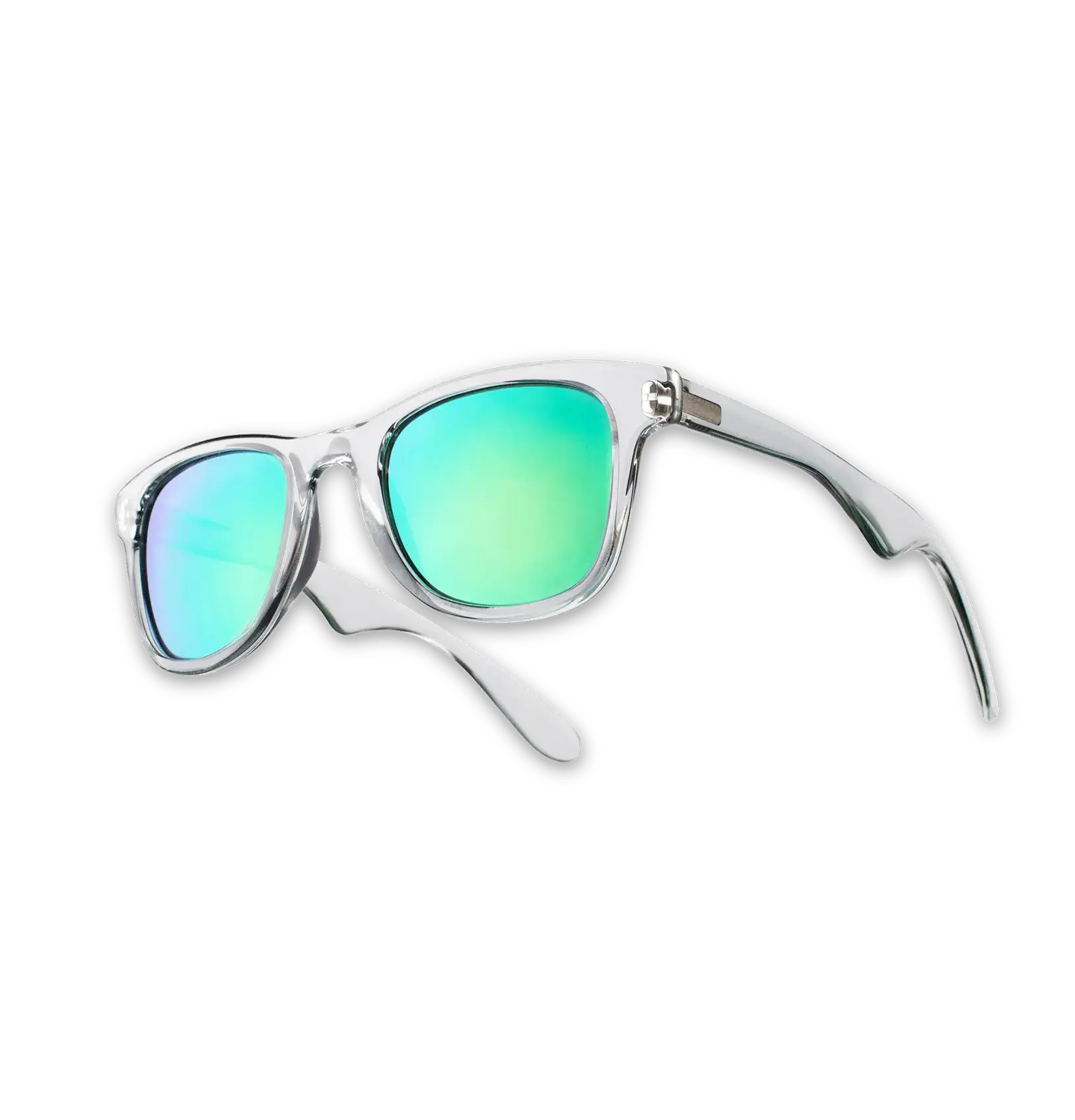Outgrowing QuickBooks and Spreadsheets? Here's Why an ERP for Apparel Industry Is the Next Step
Outgrowing QuickBooks and Spreadsheets? Here's Why an ERP for Apparel Industry Is the Next Step
Outgrowing QuickBooks and Spreadsheets? Here's Why an ERP for Apparel Industry Is the Next Step
Sep 17, 2025
 Aptean Staff Writer
Aptean Staff Writer Short on Time? Here's an At-A-Glance Summary
In this blog you'll discover why growing apparel manufacturers need to move beyond QuickBooks and spreadsheets to specialized ERP software:
Eliminate manual data entry: Replace time-consuming copy-paste workflows with automated data flow to update inventory, production and shipping in real-time.
Solve version control chaos: Move from scattered spreadsheets and unsecured files to a centralized database with role-based access and detailed audit trails.
Gain real-time visibility: Get instant insight into inventory levels, production status and order fulfillment instead of scrambling through multiple systems.
Access industry-specific features: Replace costly workarounds with built-in apparel functionality like style-centric architecture, EDI integration and royalty calculations.
Scale without constraints: Support multi-product, multi-region and multi-currency operations as your business grows beyond what basic tools can handle.

When you started your apparel manufacturing business, you could easily run your operations with QuickBooks and spreadsheets. You had a handful of styles, a few key customers and manageable order volumes. These tools were affordable, accessible and did exactly what you needed.
But now, your company has grown. You're managing hundreds of SKUs across multiple colors and sizes, your customer base has expanded, and larger retailers are demanding rapid turnaround times with specific fulfillment requirements.
If you're still relying on basic tools, you’re likely feeling the strain—risking costly errors, operational bottlenecks and missed revenue opportunities.
It’s time to take a closer look at how QuickBooks, Excel and Google Sheets are holding your business back, and how an enterprise resource planning (ERP) system for the apparel industry can accelerate your growth through greater efficiency, visibility and control.
Watch On-Demand: The Hidden Cost of QuickBooks, Excel and Google Sheets.
Manual Data Entry Creates Costly Errors and Delays
Say a sales order comes in for 500 items spanning multiple styles, colors and sizes. With QuickBooks, you need to enter each line item manually, then update your apparel inventory spreadsheet. Then, you must adjust your production planning spreadsheet. Finally, you modify your shipping schedule.
Your team spends hours each day copying and pasting data between systems, updating formulas and checking for errors. One typo in any of these manual data entries can cascade into shipping errors, inventory discrepancies and unhappy customers.
As order volumes increase, these manual processes become unsustainable. That means it’s time for a QuickBooks upgrade.
The Apparel ERP Solution: Automated Data Flow and a Single Source of Truth
Upgrading to an ERP for the apparel industry eliminates manual data entry through automated workflows and integrated systems. When a sales order is received, the system automatically adjusts inventory, updates production planning in real time and modifies shipping schedules to reflect changes in demand. Everything flows from one centralized database, which becomes your single source of truth.
Greater automation in apparel manufacturing doesn't only save time; it fundamentally changes how your business operates. Instead of your team spending hours on data entry, they can focus on strategic activities—from analyzing sales trends to optimizing inventory levels and growing customer relationships.
Version Control Confusion Creates Vulnerability
QuickBooks’ limitations lead many apparel manufacturers to store information in spreadsheets. You might start with one master inventory spreadsheet, but as your operation grows, you add separate sheets for each product category, international orders, returns processing and dozens of other workflows.
Soon, finding the right information becomes a hunt through email attachments and shared drives. Multiple people update different versions of the same spreadsheet, resulting in duplicated orders and conflicting inventory counts.
These spreadsheets are often unsecured, too. Sensitive business information sits in files that offer minimal protection against data breaches or unauthorized access. Even the data you’ve kept in QuickBooks is vulnerable to tampering, as anyone with access can modify historical invoices or financial records months or years after they were created.
The Apparel ERP Solution: Centralized Database With Role-Based Access
Apparel ERP software is a better QuickBooks alternative because it eliminates version control issues. Everyone works from the same centralized database with role-based permissions.
This centralization also extends to reporting. Instead of consolidating multiple spreadsheets for month-end analysis, you can generate reports directly from live data. Whether you need sales by style, inventory aging analysis or customer profitability reports, the information comes from one verified source.
When you upgrade from QuickBooks to apparel ERP software, you also increase your security architecture. Unlike spreadsheets that anyone can copy and share, these modern systems track every transaction with detailed audit trails, showing who made changes and when.
Lack of Real-Time Visibility Impacts Customer Satisfaction
In QuickBooks, you can't see real-time inventory levels, production status or order fulfillment progress. As a result, you don’t know when a sales order has been processed, picked, packed, labeled or shipped until someone returns to the system to create a sales invoice.
This visibility gap forces your business to operate reactively. When a customer calls asking about their order status, you scramble to check multiple spreadsheets or contact your warehouse team for an update.
Inventory insight also influences your business growth. Without accurate information, you can’t guarantee delivery dates. In the absence of up-to-date inventory levels, you'll be reordering raw materials in the dark, which can lead to excess inventory or stockouts. And when planning production, you're working with inventory data that might be days or weeks old.
For fashion and apparel manufacturers dealing with seasonal collections and tight delivery windows, this lack of real-time visibility can mean the difference between landing a major retail account and losing it to a competitor.
The Apparel ERP Solution: Real-Time Dashboards and Reporting
Industry-specific apparel ERP software is an ideal replacement for QuickBooks and manual methods as it provides instant visibility into every aspect of your order management.
Production managers can see which orders are in cutting, sewing or finishing. Sales teams can view available-to-sell inventory, including work-in-process and in-transit goods. Customer service representatives can answer order status questions immediately without checking multiple spreadsheets or making follow-up calls.
Plus, upgrading from QuickBooks to an ERP system will significantly improve apparel inventory management. You can track inventory by style, color and size across multiple warehouses; monitor fabric and trim inventory for material requirements planning; and see exactly where each production order stands in your supply chain.
Limited Functionality Forces Costly Workarounds
QuickBooks handles basic accounting well, but it wasn't designed for apparel businesses. That’s why fast-growing companies are looking to replace QuickBooks with systems built specifically for fashion and apparel production.
As your business expands, you may need new functionality that QuickBooks cannot provide—for example, a royalty feature that can track licensed artwork usage and payment.
If you stay with QuickBooks, the only solution to limited functionality is manual workarounds. That means exporting data to spreadsheets and hoping you don't make mistakes that could damage customer relationships. Requirements from major retailers may even force you to purchase separate electronic data interchange (EDI) software to deliver the service levels they expect.
The Apparel ERP Solution: Integrated Industry-Specific Features
ERP software is your best QuickBooks alternative because it includes features specifically designed for fashion and apparel manufacturers. Style-centric architecture means one style number encompasses all colors and sizes, not 35 separate SKUs for a shirt in five colors and seven sizes.
Integrated apparel EDI software connects you directly with major retailers, while automated allocation rules ensure your highest-priority customers receive inventory first.
An ERP system can handle complex apparel-specific scenarios, including royalty calculations for licensed products, size curve planning for new styles, multi-dimensional inventory tracking and automated reorder points. These aren't add-ons or workarounds; they're core features designed for how apparel businesses operate
Inability To Scale Constrains Business Growth
Perhaps the most damaging limitation of QuickBooks and spreadsheets is their inability to scale with your business. A significant increase in order volumes leaves your team drowning in data and more likely to make operational errors.
These bottlenecks and vulnerabilities compound as orders increase:
Customer onboarding slows as you manually configure each account.
New product launches require dozens of spreadsheets to be updated.
Multi-brand or multi-division reporting becomes extremely difficult.
International expansion stalls due to currency and compliance complexities.
Each of these obstacles can hold back your ability to scale. Instead, upgrading your enterprise technology helps you overcome them all and fuel growth.
The Apparel ERP Solution: Supports Multi-Product, Multi-Region, Multi-Currency Manufacturing
Unlike QuickBooks, apparel-specific ERP systems are purpose-built to handle the complexity of managing thousands of SKUs across multiple styles, sizes and sales channels.
When you migrate from QuickBooks to a solution like Aptean Apparel ERP, you gain the ability to manage multiple brands, divisions and legal entities within a single platform. International growth becomes easier with built-in support for multiple currencies and region-specific compliance requirements.
As your business adds new products and customers, your ERP system scales with you without adding technical complexity or operational headaches. It also provides a digital foundation for integrating further apparel solutions, like product lifecycle management (PLM) or shop floor control (SFC), and exploring AI enablement.
When To Upgrade From QuickBooks to Apparel ERP Software
If your team spends more time on administrative tasks than fulfilling orders, or if errors and delays are becoming routine, it’s time to evaluate whether your current tools can support your business goals.
For many fashion and apparel manufacturers, upgrading from QuickBooks to specialized ERP software is a necessary step to more efficient, accurate and scalable operations.
An ERP for the apparel industry is built to handle the specific demands of your industry, from multi-SKU inventory and order management to production planning, compliance and fulfillment. It replaces disconnected software and spreadsheets with a centralized system that supports every part of your operation.
The result is a business that runs with greater accuracy and less friction. Your team works with confidence. Your customers receive timely, accurate deliveries. And you gain the operational structure needed to improve cash flow and accelerate growth.
So when you’re looking to upgrade from Quickbooks, Excel or Google Sheets, turn to Aptean’s industry-specific apparel ERP.
Ready to replace QuickBooks? Book an Aptean Apparel ERP demo.
Ready to Transform Your Fashion and Apparel Business Today?
If you’re ready to take the next step, we’d love to help.



